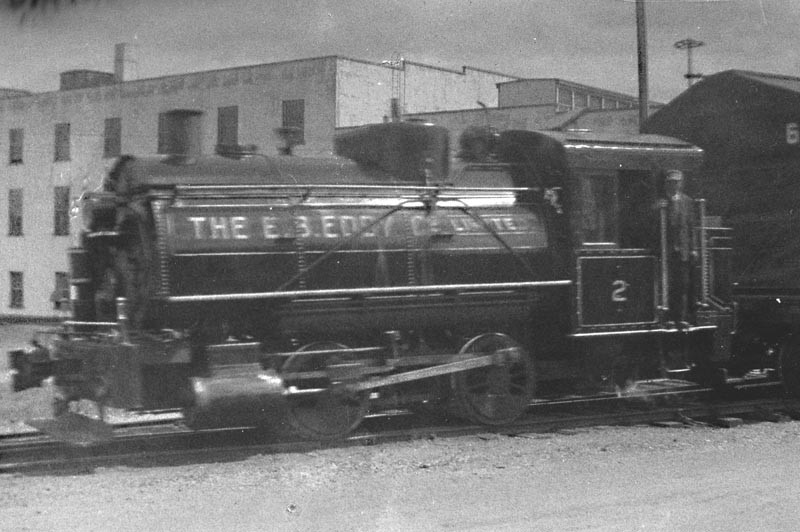Local Hero - Arthur Guertin CSTM Matt-2229 On 29 March 1946 there was a serious fire in the E.B. Eddy wood piles in However, while railway historians have focused on the damage that was done to the railway bridge approaches there was a more small drama going on in the Eddy lumber yard itself. The Ottawa Citizen of 30 March 1946 explains: “While flames at the Eddy plant were threatening the source of his livelihood and in some cases the lives of his fellow workers, Arthur Guertin, engineer in charge of the E.B. Eddy yard engine, called upon two companions and risked his life to remove from a particularly dangerous position, two tank cars filled with chlorine gas. “Manning a decrepit steam engine which is used to haul freight cars from one section of the property to the other, Engineer Guertin cautiously approached the flame swept tanks and with the aid of Frank Cain, 399 Arlington avenue, and Arthur Meunier, 37 Frontenac street, Hull, coupled the two dangerous filled cars to the tender of his engine and pulled away. They were placed in a position far removed from the reach of the flames and heat. In an exclusive interview with a
representative of the
Evening Citizen, shortly before he left for his Although the engineer accepted his feat of bravery as a commonplace job of work connected with his position, Mayor Raymond Brunet and director Emile Bond (the Fire Chief) looked upon his act as one of the most fearless they had seen in their several years of public service. <>“A resident ofThere is a picture accompanying this piece but it is too poor to reproduce here. The caption refers to the “mechanical hero of the tremendous conflagration was Eddy's minute locomotive. Its whistle shrieking stridently, the tiny engine worked ceaselessly through the night, hauling freight cars loaded with material out of the danger zone.” Another picture shows rails which were described as "pretzelled". E.B. Eddy had only one standard gauge
steam locomotive. It was an 0-4-0 saddle
tank built by Montreal
Locomotive Works in April 1926, serial number 65429 and carried the
number
2. (Number 1 was a Vulcan gas locomotive
which went to Anticosti Island in 1929-30).
No. 2 is now at the  CSTM Matt-0126 |
![]()